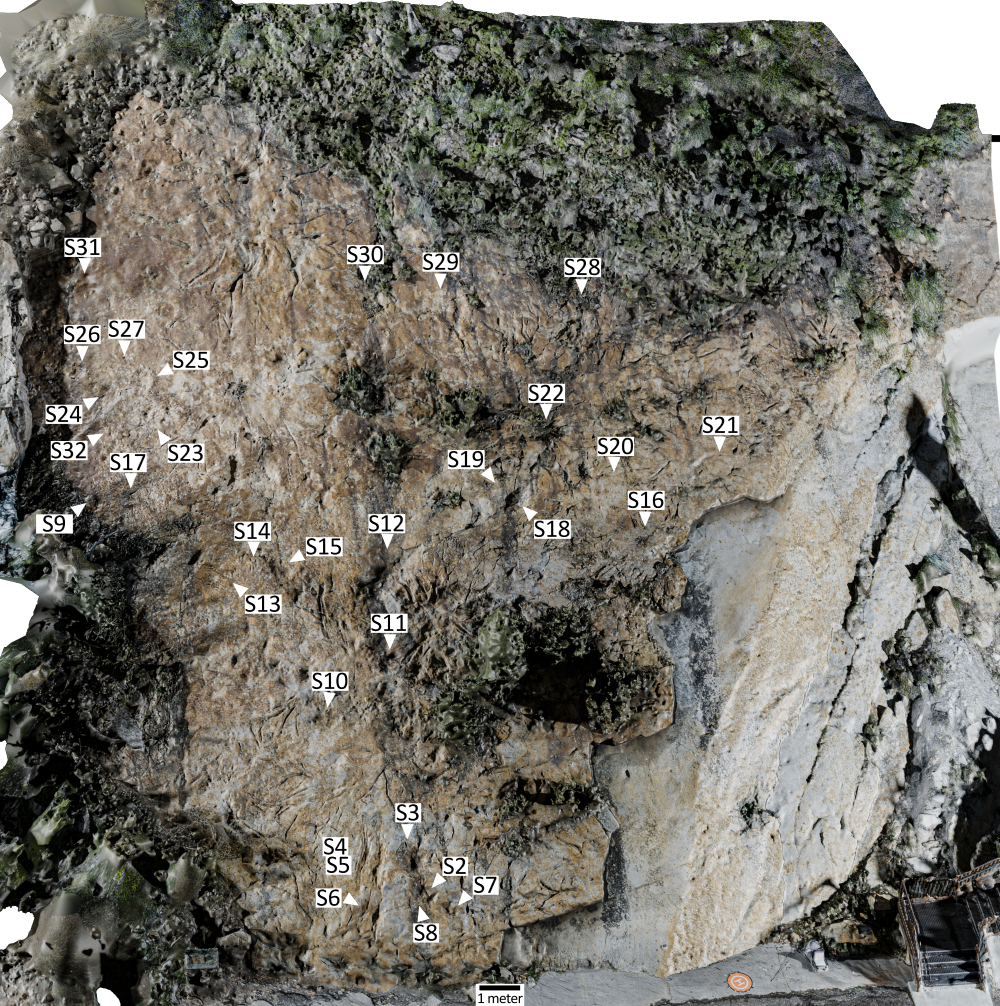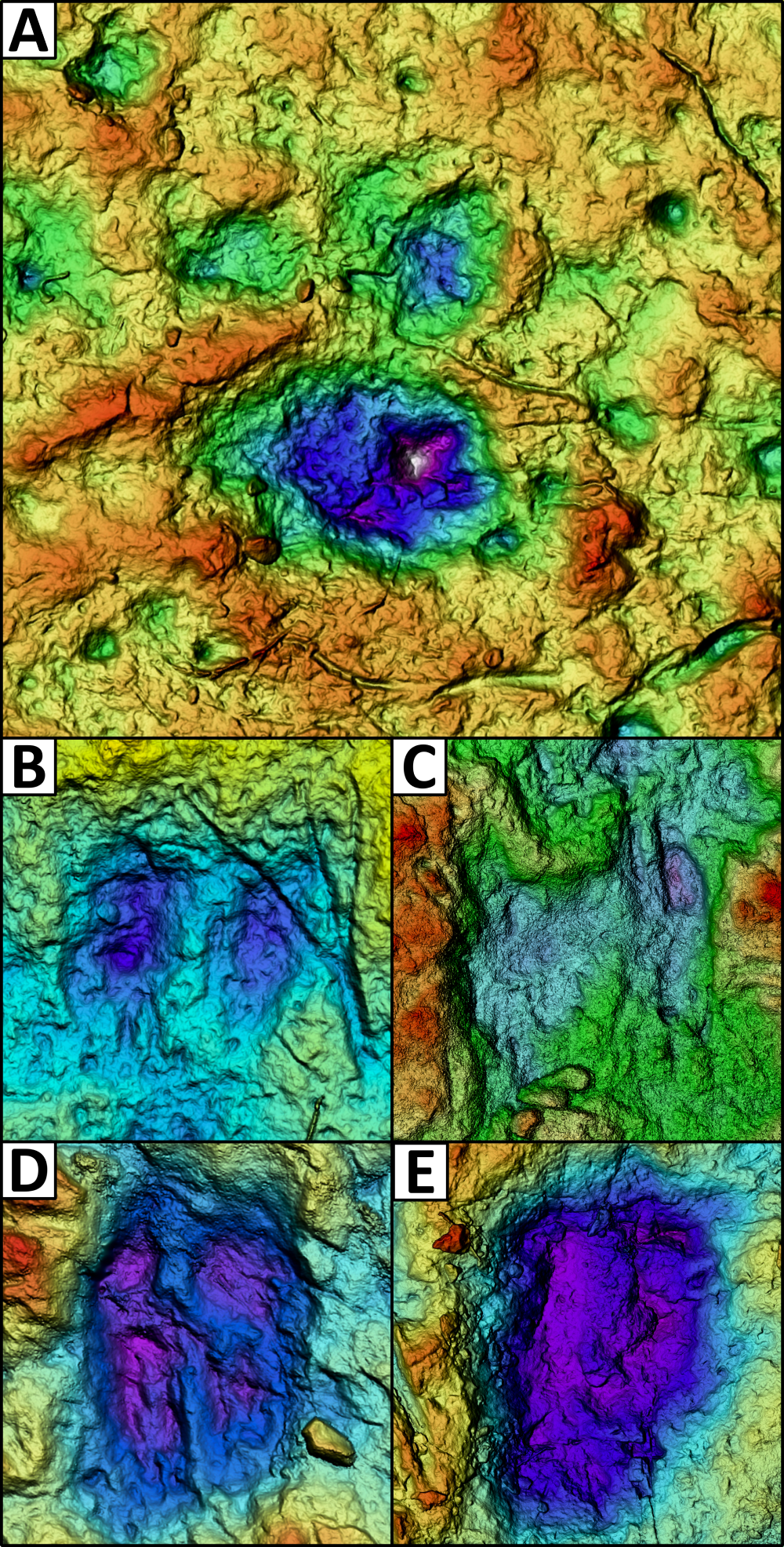For clues as to how dinosaurs dated, we can look to the last living dinosaurs: birds. On Earth today, several species perform lek mating, a spectacular display that sees males gather together for what is essentially a dance-off. Females will watch the males perform, and the most impressive wins the chance to mate with her. Sounds fun, right? And what’s even more delightful to contemplate is that this behavior was practiced by several dinosaur species, too.
We interpret trace fossils and the behaviors they represent by observing similar behaviors in animals that produce the same – or similar – traces today.
Dr Caldwell Buntin
We’ve discovered ancient lekking sites in the form of trace fossils, scars on solid ground that have survived for millions of years, laying out the killer moves of ancient animals. Now, it looks as if we might have found one of the largest lekking arenas known to science.
One-hundred-million-year-old marks discovered in patches across Colorado’s Dinosaur Ridge appear to set the stage for what was once a mating display area for dinosaurs. Using high-resolution drone imagery, a team of scientists identified 35 Ostendichnus, which is the word used to describe theropod mating display scrapes.

An aerial view of the scrape sites identified.
Image courtesy of Caldwell Buntin
Twenty-five of these are considered reliable, while others may warrant closer inspection to rule out the possibility that they are erosional features (as a suspected 36th Ostendichnus was found to be). An impressive amount of detail to discern from afar, and this new lekking site could be a record-breaker for dancing dinosaur data.
“This site at Dinosaur Ridge indicates that this wasn’t just a behavior found in a specific spot or just a one-off thing,” said Erin LaCount, director of education programs at Dinosaur Ridge (who was not involved with the study), to Science. “To go from two to potentially three lek traces to having more than 30 in this study could make our site the largest lekking arena in the world.”
As for what dinosaurs could’ve made the marks, there are two key approaches you can take in trying to work backwards to figure it out.

A closer look at some of the trace fossils of lek scraping discovered.
Image courtesy of Caldwell Buntin
Vertebrate ichnology is unique in that we have fossil material we can directly compare to tracks or trackways to identify what kinds of animals made them.
Dr Caldwell Buntin
“Behaviours – We interpret trace fossils and the behaviors they represent by observing similar behaviors in animals that produce the same – or similar – traces today, essentially following the thought that ‘the present is the key to the past’,” study author Dr Caldwell Buntin, lecturing professor at Old Dominion University, told IFLScience.
“Martin Lockley (the scientist who originally described the traces) interpreted the courtship behavior by process of elimination (heuristics) after comparing a number of possible behaviors: colonial nesting, digging for food or water, territorial marking, and mating displays. Our paper took a more data-driven approach (actualistic) to reassess his interpretation, which I mostly agree with.”
“Tracemakers – Vertebrate ichnology is unique in that we have fossil material we can directly compare to tracks or trackways to identify what kinds of animals made them. Since these scrapes are occasionally associated with tracks, we can infer what made them. In Colorado, these traces are associated with Magnoavipes, which was made by a small theropod (likely an Ornithomimid). At the now buried site in Canada, they were associated with Irenesauripus, which has been attributed to Acrocanthosaurus.”
The discovery of these 35 scrape sites marks an exciting development in our understanding of dinosaur interactions, demonstrating that when the time came to woo a mate, they too were trying to stand out from the crowd by throwing shapes. It’s possible, also, that these same dance sites later became the foundations for a nest, which is again something we see in birds alive today. Best of all, you can go and see it all for yourself.
“It is readily accessible for viewing by the public,” said Buntin, as though some of the sites’ location remain undisclosed because they are protected, “the new arena can be walked right up to on the interpretive trail at Dinosaur Ridge.”
The study is published in the journal Cretaceous Research.
Source Link: Dancing Dinosaurs May Have Used Site In Colorado As “Largest Lekking Arena In The World”